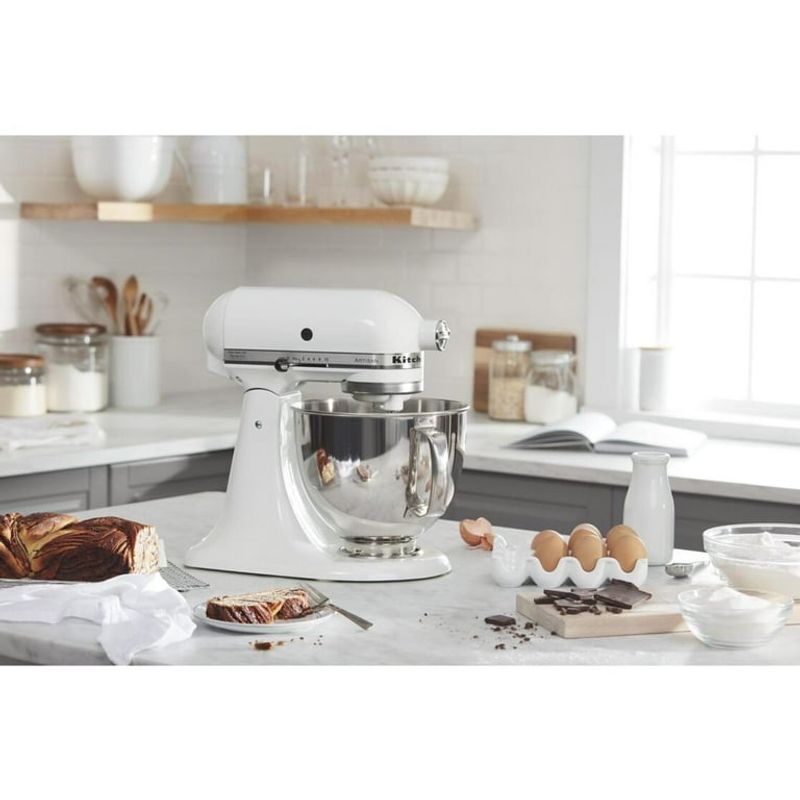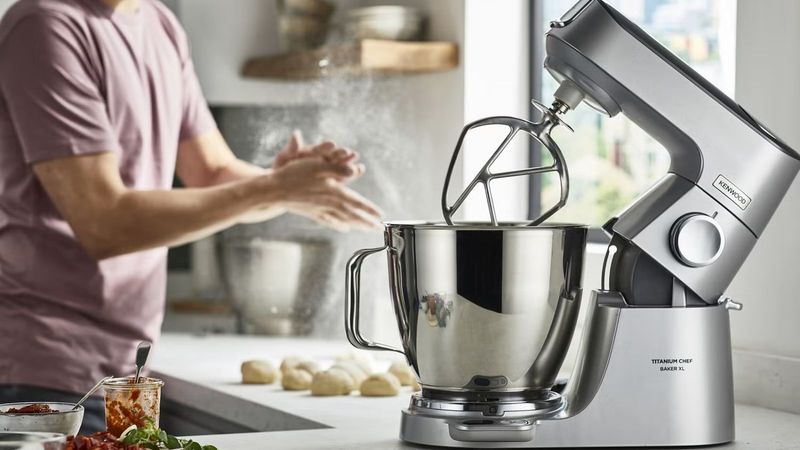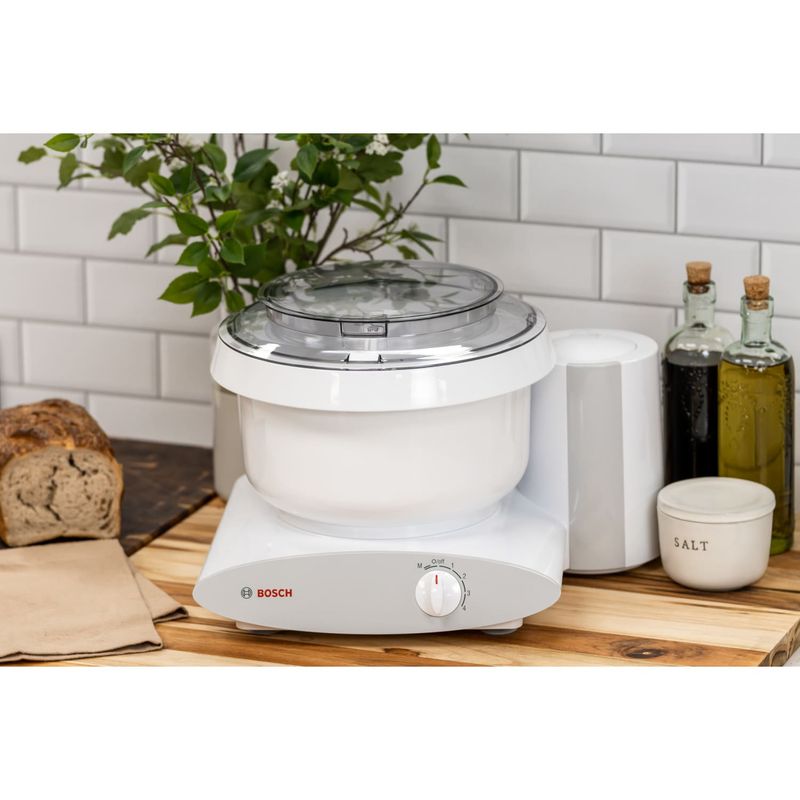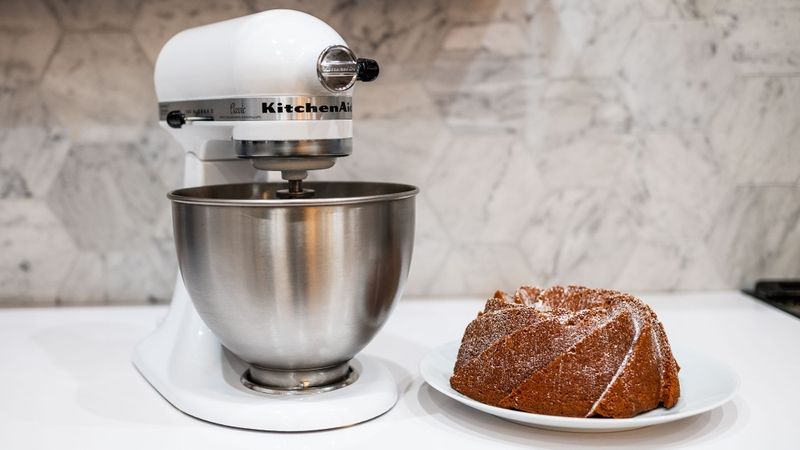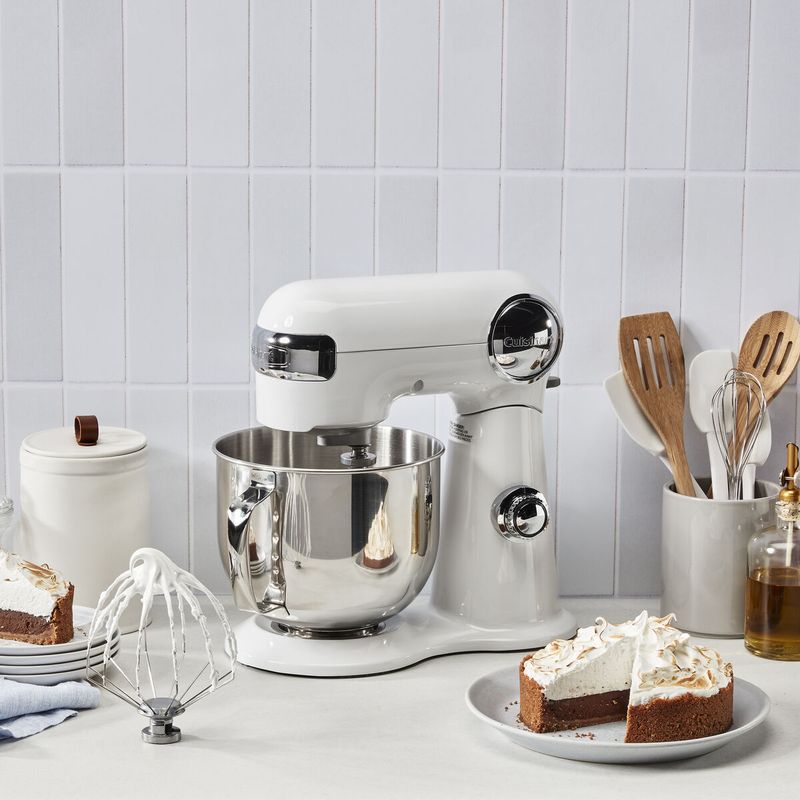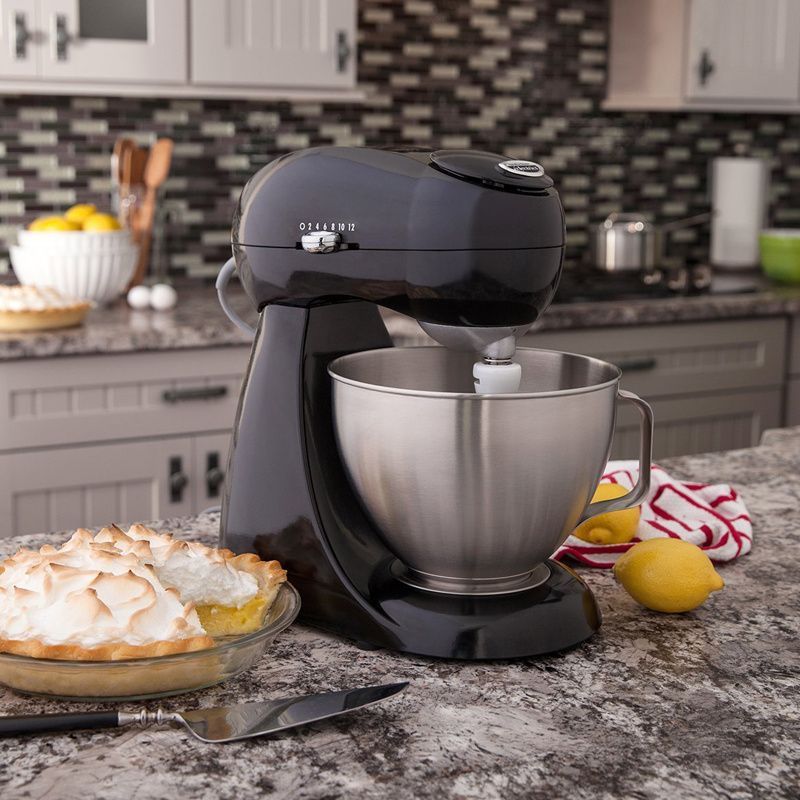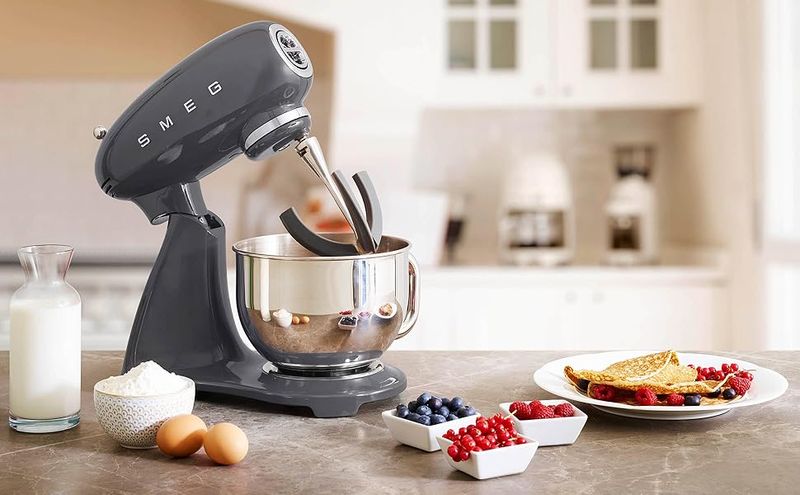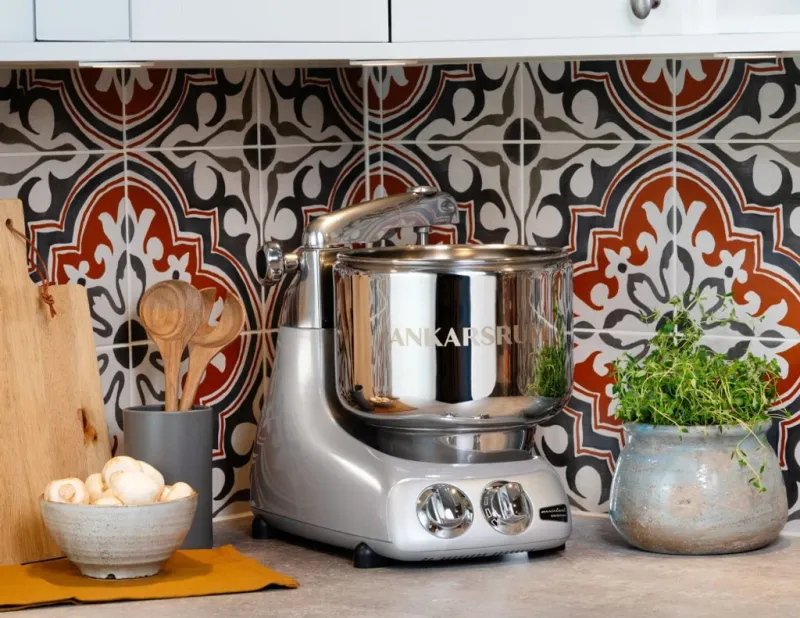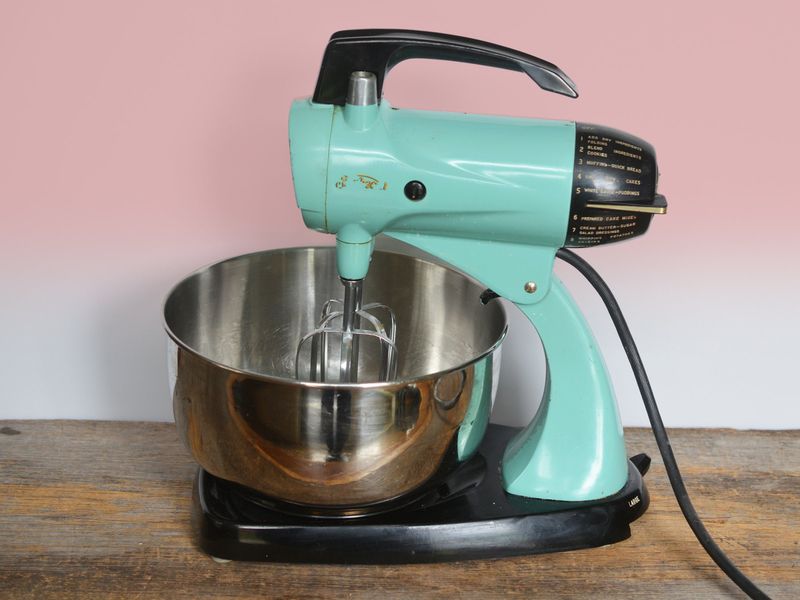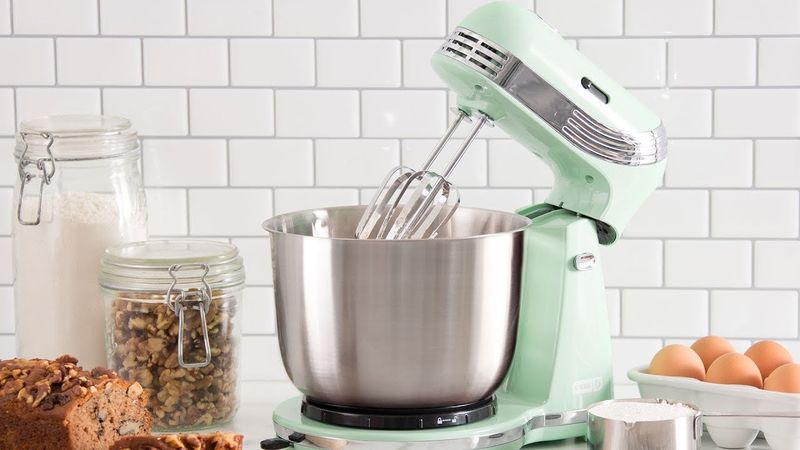Finding the right stand mixer felt overwhelming — so many models, so many promises. To cut through the noise, I tested ten popular mixers with real recipes: bread dough, cakes, and batches of cookies. After weeks of whisking, kneading, and baking, only three mixers truly impressed me.
1. KitchenAid Artisan Series 5-Quart
The KitchenAid Artisan won me over almost immediately, but it wasn’t just its iconic look — the performance sealed the deal. The tilt-head design made switching attachments simple, and the 5-quart bowl easily handled a double batch of cookie dough.
Its sturdy metal body gave me confidence, and the planetary mixing action ensured every ingredient was fully incorporated. Whipped cream took just minutes, and bread dough came together without overheating or wobbling.
It isn’t the cheapest option, but its durability, versatility, and consistent results make it worth the investment. This is the kind of mixer you keep for life — I finally understood why so many bakers swear by it.
2. Kenwood Chef Titanium
The Kenwood Chef Titanium impressed me with its sheer power. Designed with bread bakers in mind, it kneaded dense, heavy dough with ease. The motor never strained, and the bowl stayed steady, no matter how much I pushed it.
The professional stainless-steel build gave it a premium feel, and I loved the in-bowl lighting that let me monitor texture as I mixed. The precision speed control made delicate tasks like meringues effortless.
It’s heavier and pricier than most, but for serious bakers or large families, the Chef Titanium feels like a professional tool at home. If bread is your passion, this is the one you’ll want.
3. Bosch Universal Plus
I’ll admit, I was skeptical about the Bosch at first. Its bottom-driven design looks unusual compared to traditional stand mixers. But once I started testing, I realized this machine is a powerhouse.
The open-bowl design made it easy to add ingredients on the fly, and cleanup was fast. It handled massive bread doughs better than anything else I tested, and whipping egg whites to stiff peaks was quick and flawless.
It may not win beauty contests on the counter, but if you value performance and capacity over looks, the Bosch Universal Plus will surprise you. It’s lightweight, compact, and incredibly powerful — a true hidden gem.
4. KitchenAid Classic Series
When I first unpacked the KitchenAid Classic, I expected the same legendary performance I had experienced with the Artisan model, just in a slightly smaller, more affordable package. For cake batters, cookie doughs, and whipped cream, it did the job reliably and without much fuss.
But as soon as I pushed it into heavier tasks, like kneading bread or pizza dough, the limitations became clear. The motor strained audibly, the head vibrated, and the dough hook never quite incorporated everything evenly.
This mixer is fine if your baking leans toward lighter batters or occasional weekend projects, but for anyone who loves baking bread regularly, it simply doesn’t have the muscle. While the Classic keeps KitchenAid’s familiar charm, it’s not the dependable workhorse its bigger sibling proved to be.
5. Cuisinart Precision Master
The Cuisinart Precision Master initially impressed me with its sleek stainless steel bowl and sturdy design. It’s also more affordable than some of the high-end mixers I tested, which made me hopeful it could be the perfect mid-range option.
With cake batters, muffins, and frostings, it performed admirably. The attachments locked in firmly, and the motor ran smoothly for these lighter tasks. However, the problems started when I tested bread dough. Even with moderate amounts, the motor bogged down, and I could see the strain in its mixing action.
Cleanup was easy, and for casual bakers who don’t push their machines beyond cakes and cookies, this mixer might be a decent investment. But for me, the inconsistency and lack of power made it hard to trust for more demanding baking projects.
6. Hamilton Beach Stand Mixer
The Hamilton Beach Stand Mixer was one of the most affordable models I tested, and I went in with realistic expectations. For the price, I didn’t expect professional-level performance, but I hoped it could at least be a reliable starter mixer.
Unfortunately, my experience was frustrating. For cookie dough and light cakes, it did okay, though I noticed uneven mixing that required frequent scraping. When I tried kneading bread, however, the motor struggled and the mixer started wobbling on the counter. I worried about its long-term durability.
I can see this mixer working for someone who bakes only occasionally or needs a budget-friendly option for basic tasks. But as a regular tool in the kitchen, it left me underwhelmed. It’s not a mixer I’d trust for consistent, long-term use.
7. Smeg Retro Stand Mixer
The Smeg Stand Mixer was easily the most stylish machine in my lineup. Its retro curves and glossy finish made it look more like a statement piece than an appliance. I’ll admit — I loved how it brightened my countertop.
But once I started baking with it, I quickly realized that looks don’t always equal performance. It handled pancake batter and lighter cake mixes fine, but when I tested thicker doughs or larger batches, the power wasn’t there. Mixing felt uneven, and sometimes pockets of dry flour lingered at the bottom of the bowl.
For casual bakers who value aesthetics and only need it for light tasks, the Smeg might be enough. But at its high price point, I expected far more consistency. For me, it felt like form over function.
8. Ankarsrum Assistent Original
The Ankarsrum Assistent Original immediately stood out with its unique design. Instead of the traditional tilt-head or bowl-lift, it uses a rotating bowl with bottom-driven rollers. It took me a while to get comfortable with the setup, but once I did, I realized it’s an incredibly powerful machine.
When it came to bread, this mixer was phenomenal. It kneaded large, heavy doughs effortlessly — far better than most of the other models I tested. It also excelled with whipped cream and meringues, delivering airy, stable results.
That said, the learning curve is steep. At first, I wasn’t sure how to adjust the attachments, and it took multiple tries to figure out the right settings. It’s also one of the most expensive mixers in the group. For serious bakers who want commercial-level performance, it’s worth exploring. For beginners, though, it may feel intimidating.
9. Sunbeam Mixmaster
The Sunbeam Mixmaster brought me right back to memories of old-school kitchen appliances. Lightweight and compact, it felt approachable and user-friendly from the start.
With simple batters, like muffins and pancakes, it did just fine. But when I pushed it further, inconsistency set in. Sometimes it mixed evenly, while other times I found chunks of unmixed flour stuck to the bottom of the bowl. The motor clearly wasn’t designed for heavy-duty use, and it showed whenever I tried bread or thick cookie dough.
I wanted to like this mixer for its simplicity and nostalgic charm, but I couldn’t rely on it for consistent performance. It works as a backup or for very light baking, but not as a dependable everyday tool.
10. Dash Stand Mixer
The Dash Stand Mixer was by far the cutest appliance I tested. Small, colorful, and lightweight, it looked more like a toy than a serious kitchen tool. I wasn’t expecting much — and that turned out to be fair.
For whipped cream or pancake batter, it handled the job adequately. But once I tested thicker cookie doughs or bread, it simply couldn’t cope. The motor strained almost immediately, and the attachments struggled to incorporate ingredients evenly.
This mixer could be fun for beginners, kids learning to bake, or someone who only makes very light recipes. But for me, it felt more like a novelty item than a true workhorse. In a lineup of serious mixers, it just didn’t belong.

